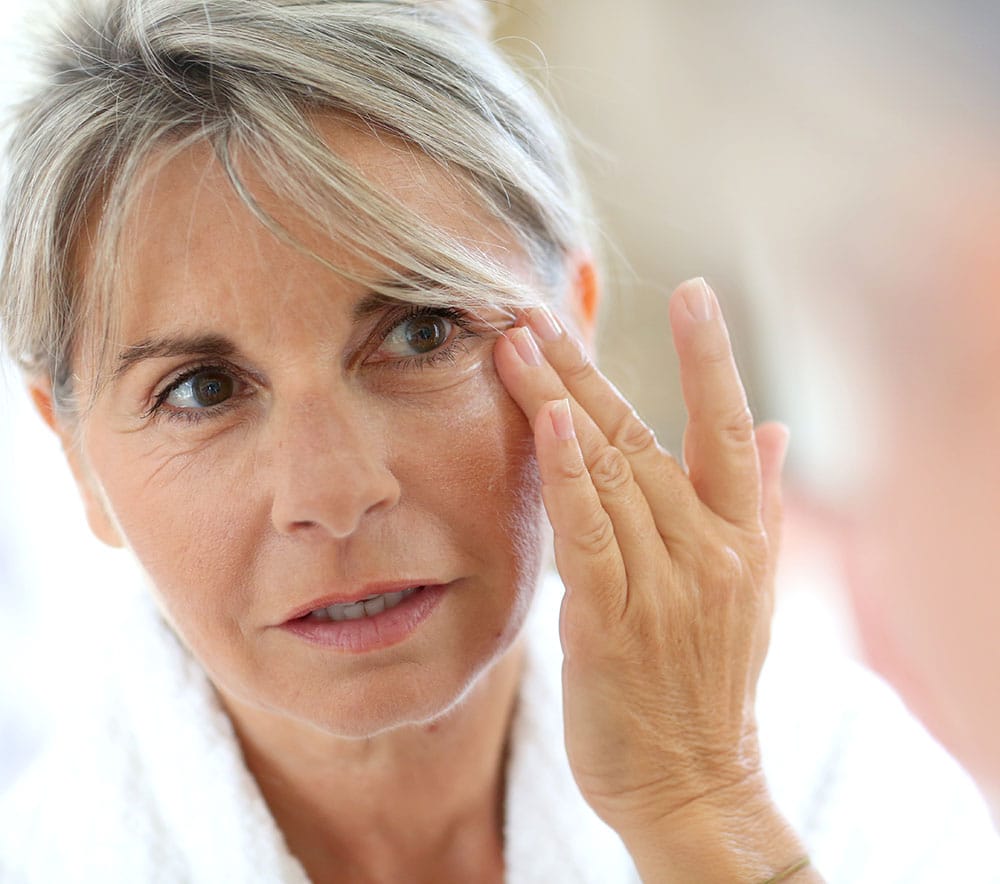What is it
Upper eyelid problems
Problems such as dermatochalasis, sagging or excess skin or fat that compromise visual function may appear on the upper eyelid, or excessive drooping of the upper eyelids to the point of interfering with vision. When this occurs, upper blepharoplasty is recommended.

Treatment of upper eyelid problems:
Blepharoplasty

In the event of functional problems of the upper eyelids, such as dermatochalasis, sagging or excess skin or fat that compromises visual function, or excessive drooping of the upper eyelids to the point of interfering with vision, upper blepharoplasty is used. This surgery consists of removing excess skin and fat from the upper eyelids by making micro-incisions in their natural folds, so that they are minimally noticeable.

The surgery lasts approximately one hour in total (both eyes). It is usually performed under local anaesthesia, although mild sedation (intravenous medication) can be added if necessary, without reaching the level of general anaesthesia.
After the intervention, a suture is placed on the eyelids, which is removed between seven and ten days later. Recovery is usually very tolerable, and there may be inflammation and local bruising in the first week, but little discomfort. They do not have changes in vision, so most patients return to their activities after the first week. However, the inflammation does not fully resolve until after the second postoperative week.
Other pathologies
SUBSCRIBE
to our newsletter
Be the first to hear all the latest news from the Oftalmedic Salvà group and receive exclusive promotions that may interest you.














